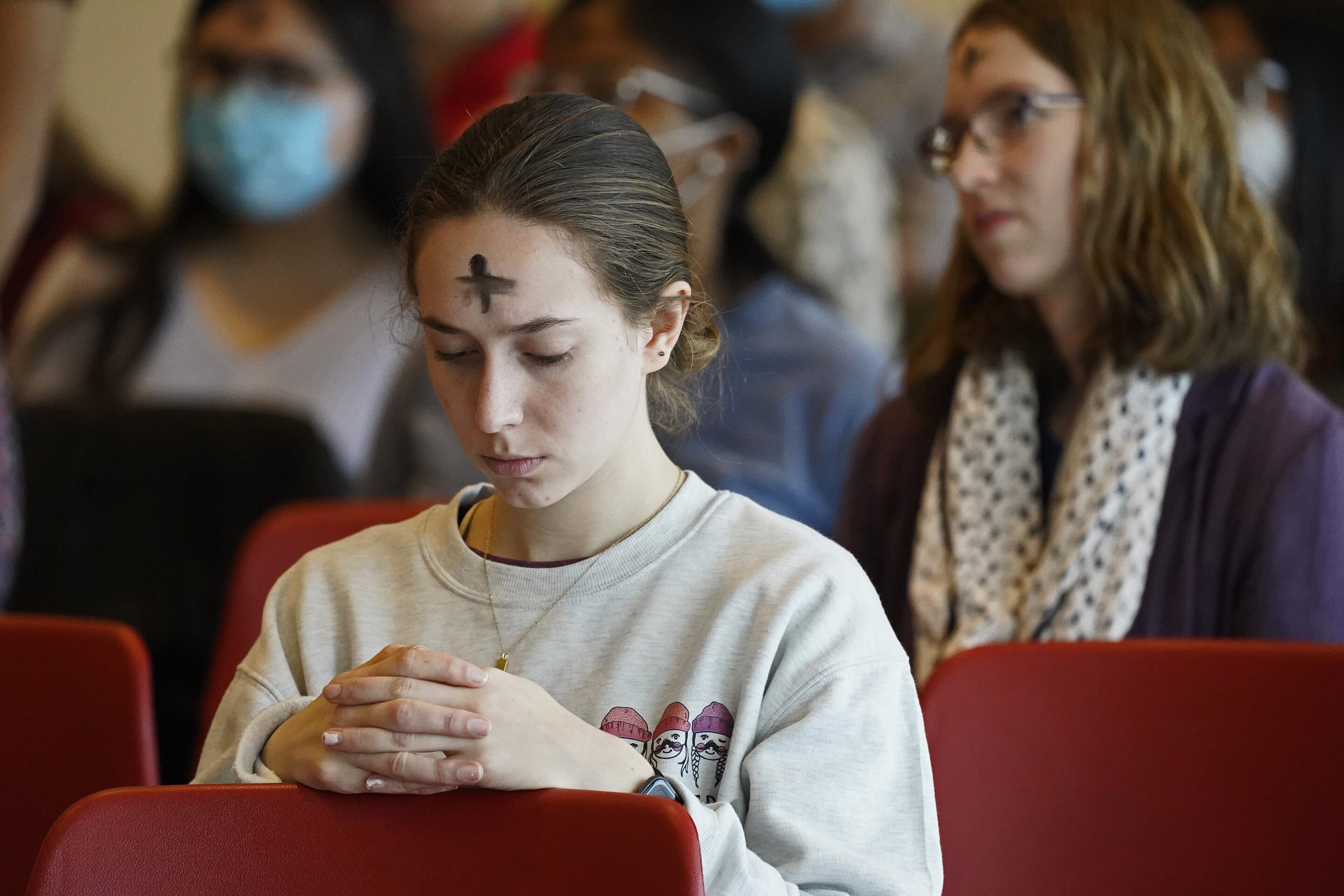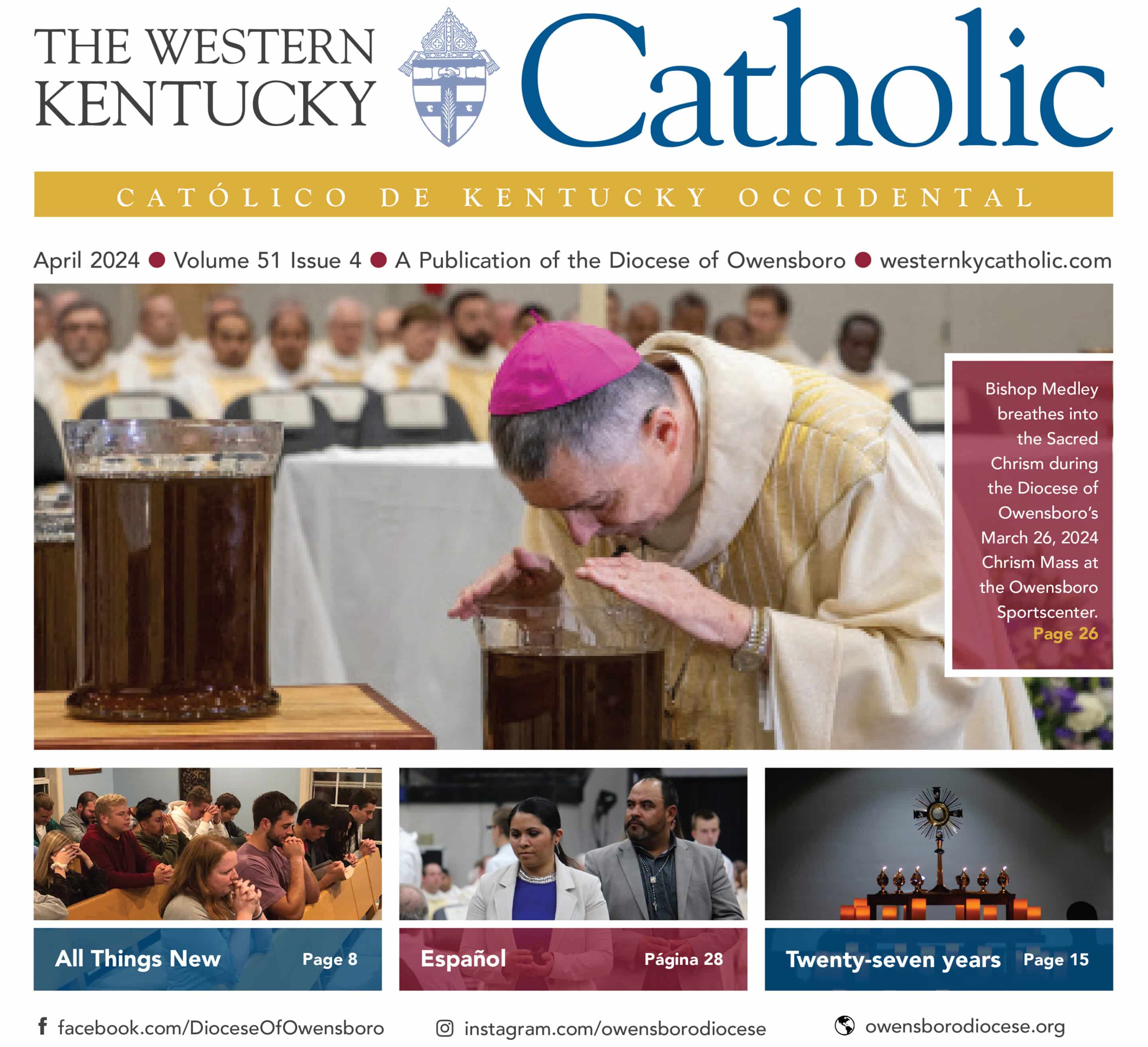
A student prays during an Ash Wednesday Mass March 2, 2022, at Stony Brook University in Stony Brook, N.Y. (CNS photo/Gregory A. Shemitz)
This Lent, what are ways that you can pray, fast, and give?
My Dear Sisters and Brothers in Christ,
Ask just about any Catholic – actually almost any Christian in general – the meaning of the season of Lent, and we will hear some rather consistent descriptors: penance, sacrifice, self-denial, “giving something up.”
All of these address some important aspects of the 40-day season observed from Ash Wednesday into Holy Week. In fact, the Church’s prayer and scriptures present a threefold call to action: prayer, fasting, and almsgiving. Most of us readily gravitate to the fasting category; thus, the memories of self-denial and sacrifice from far back in many of our childhoods.
The Church structures this for us with Ash Wednesday and Good Friday being days of both fast and abstinence. By definition, this means that adults are expected to fast – that is, to not eat between meals and ideally that two of our three meals would be small – and to abstain from meat entirely. The Fridays of Lent are to be observed as days of abstinence, that is, meatless days. And while these guides for our diet are important markers for Lent, we should never allow our strict or not-so-strict observances to grant us a pass on the call to prayer and almsgiving.
What new or additional prayer might mark your 40 days? If your life affords you the luxury of time, could you consider going to Mass at least one day each week in addition to your obligatory Sabbath? Two days per week? Six days per week? The Church in the United States is observing a three-year renewal of faith in the Holy Eucharist as the Real Presence of Christ with the National Eucharistic Revival (learn more at eucharisticrevival.org). If getting to Mass is not an option, how about praying the rosary or some other devotional daily?
One of the most common laments I hear from parents and grandparents is that their adult children and grandchildren rarely go to Mass. Would you go to Mass more frequently to pray for the intention that those not coming to Mass might come again? This is not about imposing a guilt trip on others. But perhaps mentioning your Lenten observance could trigger a positive response. If one person goes to Mass and receives Holy Communion one single time because of your example, the grace of God will have richly rewarded you.
Let your regular almsgiving have a shot in the arm during Lent. I have had many conversations with people who see the days of their lives drawing to an end. I have never heard anyone say, “I wish I had not given so much of my blessings away in charity.” Reflect on that.
Forty days of Lent can seem like a very long time in our fast-paced culture. An ancient tradition of the Church considers this. The Fourth Sunday of Lent, this year on March 10, is celebrated as Laetare Sunday. Laetare means Rejoice! Be sure to listen for the entrance antiphon, which proclaims, “Rejoice, Jerusalem, and you who love her. Be joyful, all who were in mourning.” This marks the middle of Lent as if to promise us that the “trials” of the season will not last forever. On this day, it is optional for the presider to wear a rose chasuble rather than the purple of Lent. (It may also be worn on Gaudete Sunday, the third Sunday Advent.)
My simple message: do something for Lent whether it is an act of self-denial or embracing something new.
May God bless you all,

Most Reverend William F. Medley
Diocese of Owensboro
Originally printed in the March 2024 issue of The Western Kentucky Catholic.

